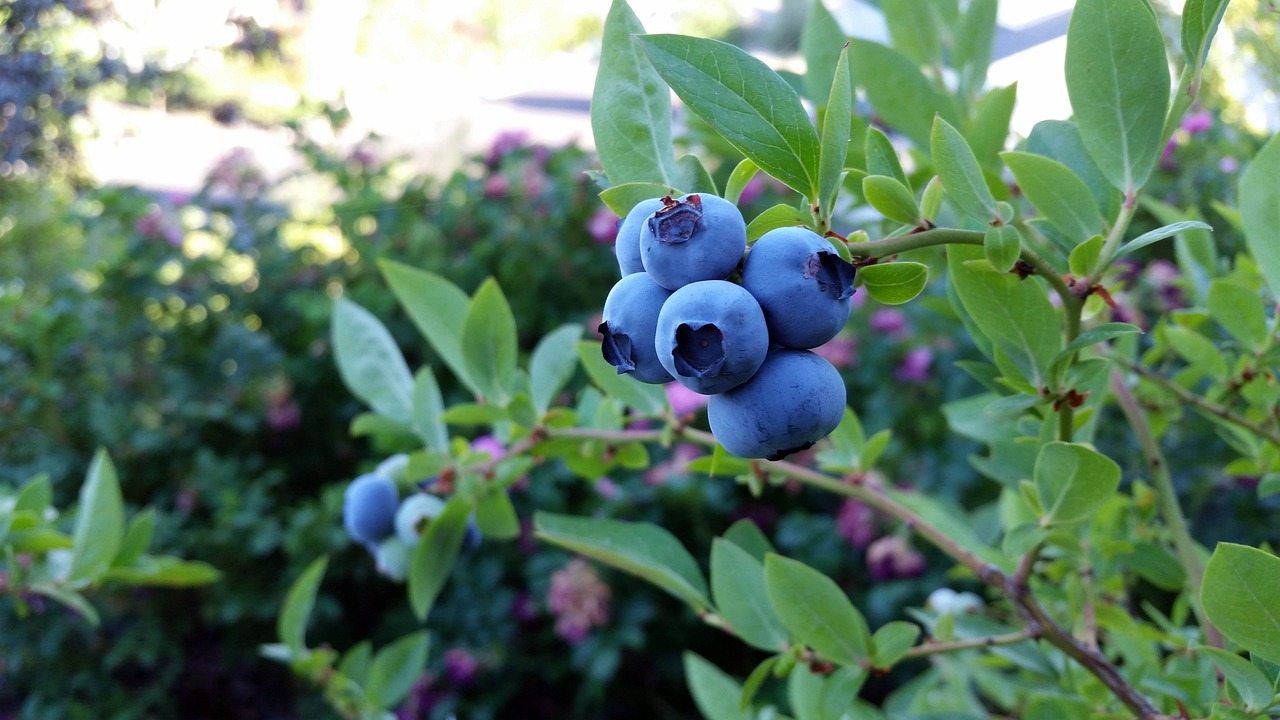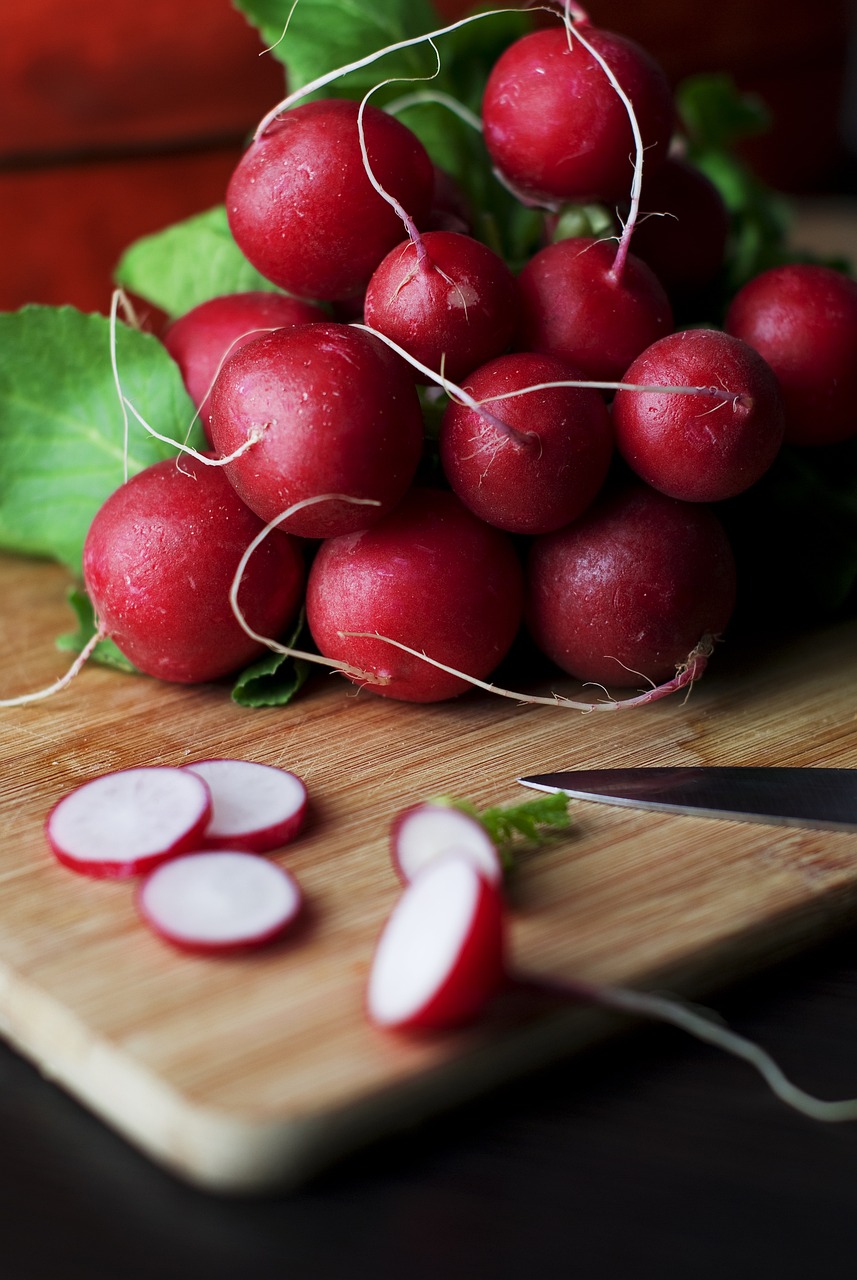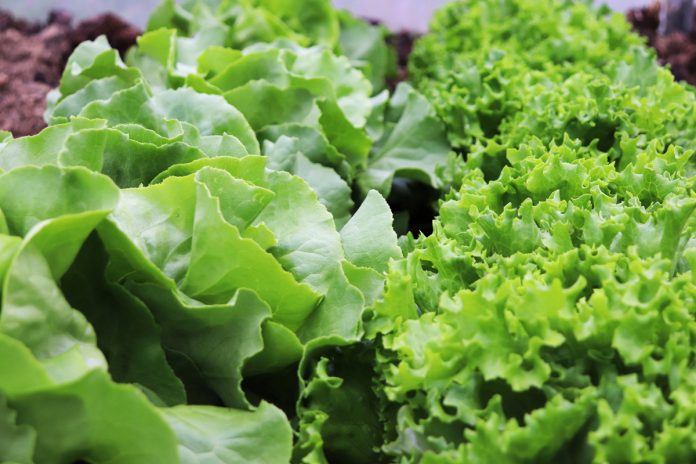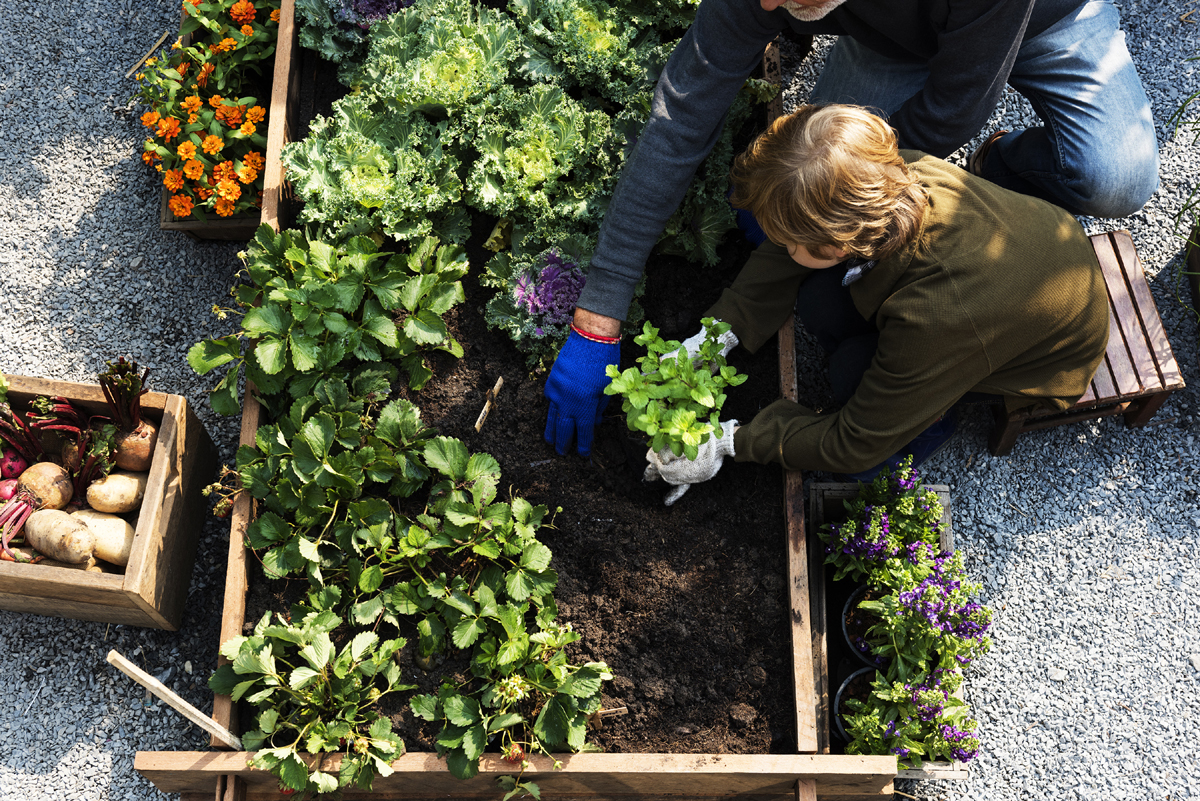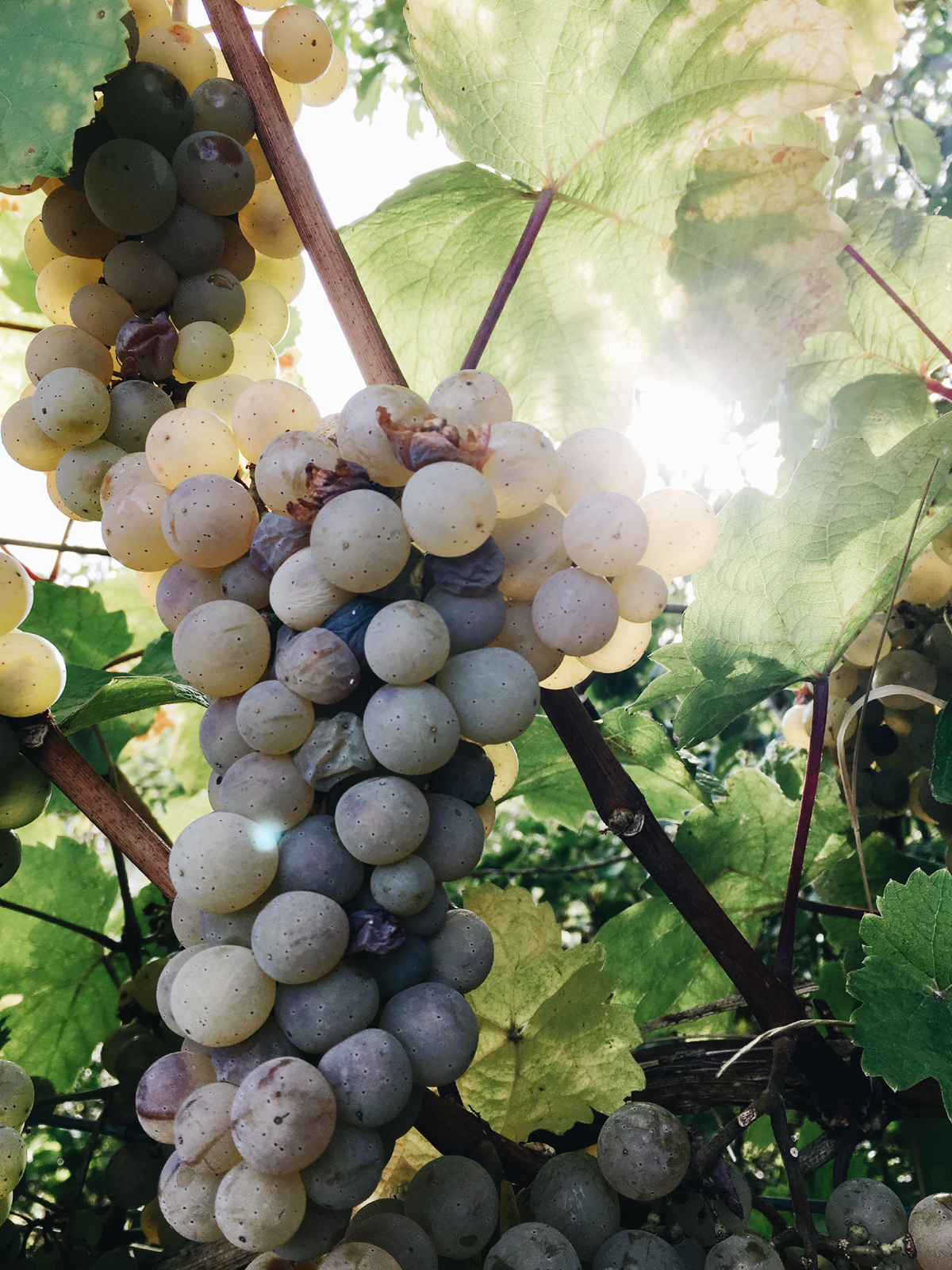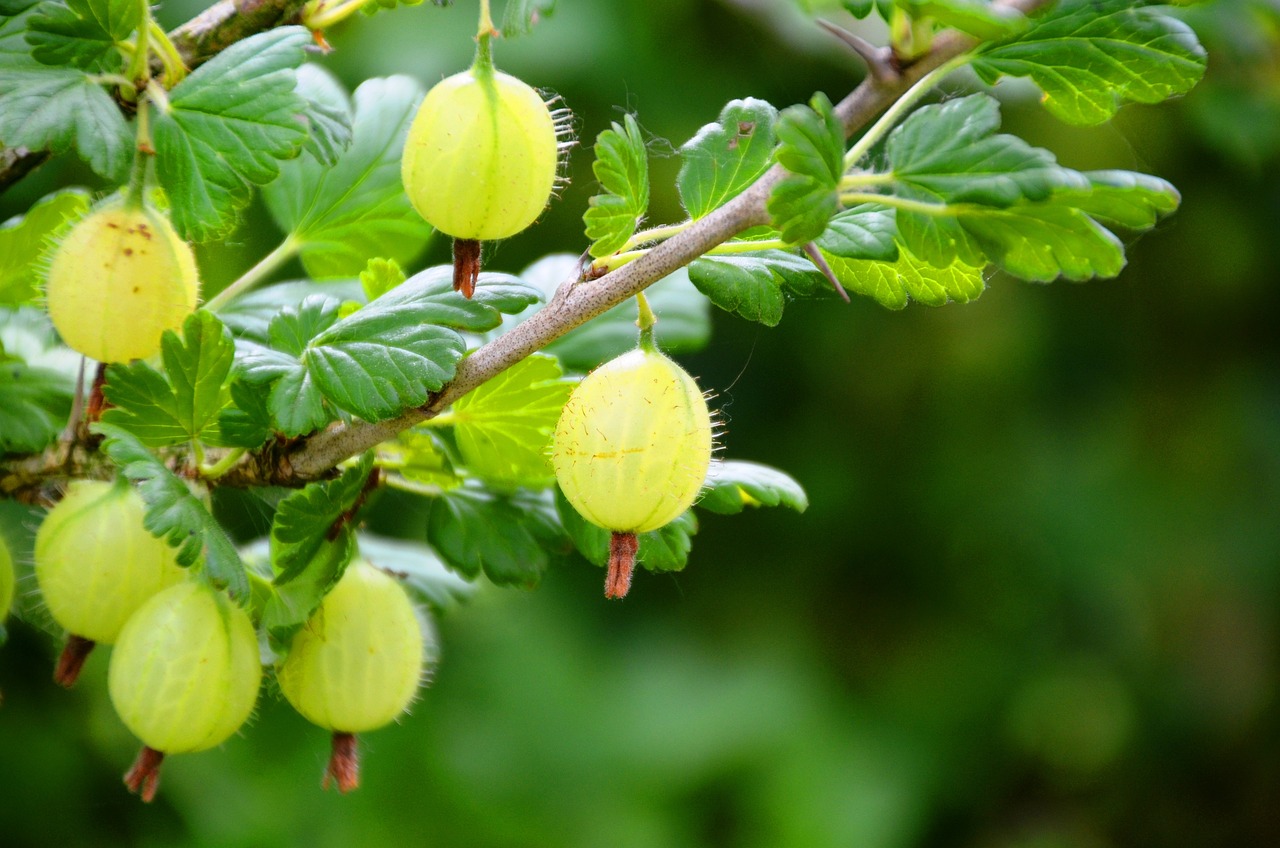Growing Tomatoes Using Organic Methods
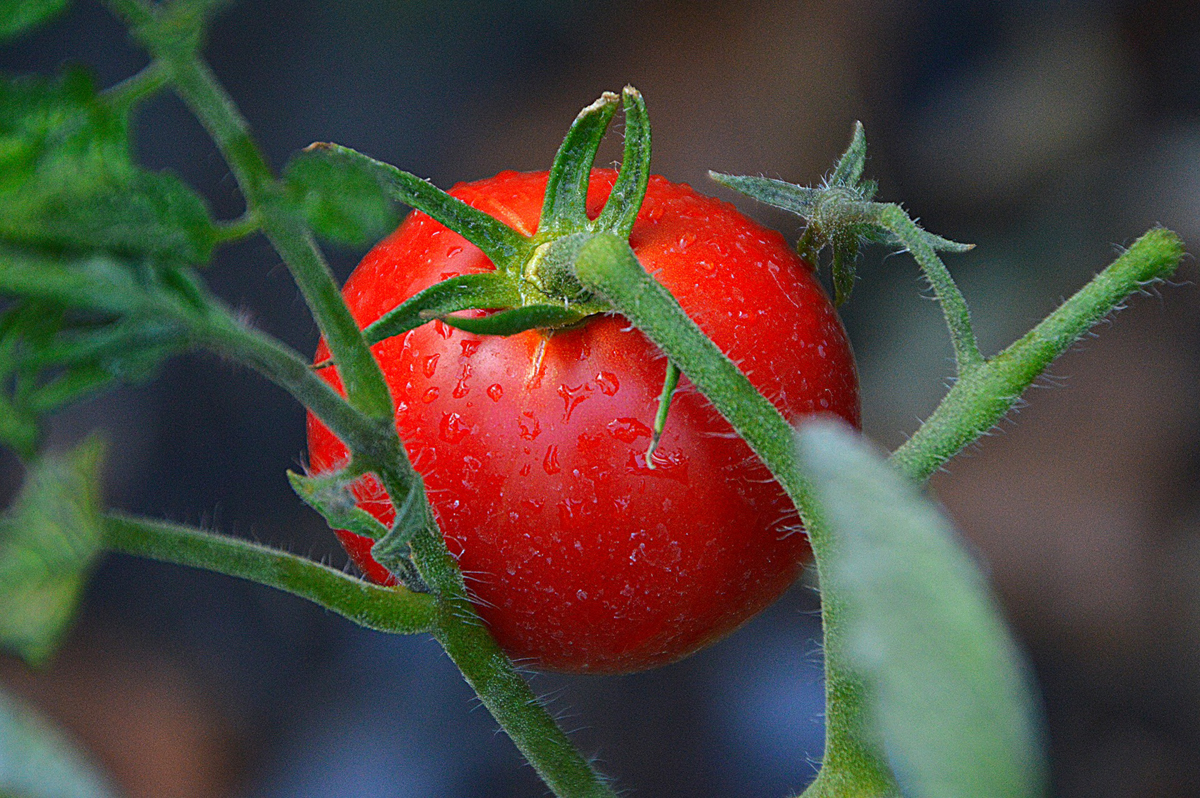
Where to Plant
Tomatoes need full sun – make sure your tomato plants get most of the available sun between 7am and 7pm during most of the summer. Tomatoes also need well-drained soil. This can be achieved in raised beds, or by adding well-composted manure and compost to the soil.
We’ve been successful planting in rocky soil (small stones). The rocks absorb and retain heat and keep the soil warm into the evening.
When to Plant
Tomatoes need a warm and relatively long growing season. In many parts of the country, tomato seeds must be started indoors. Start your seeds 6-8 weeks before the danger of frost is past and garden soil temperature is 60°-70°F.
We used to start our tomatoes indoors earlier than we do now. Here in Eastern Washington State, because we have short growing seasons and long winters, it’s hard to resist the gardening bug that infects us in February. Planting too early results in plants growing taller than the grow-lights permit, and a sunny window generally does not provide enough light to prevent spindly growth.
Sowing tomato seeds 6-8 weeks (no earlier than 8 weeks) before setting out is should be enough growing time. Our plants are healthier when we are patient.
Preparing The Soil
Tomatoes grow best in a slightly acidic soil with a pH of 6.2 to 6.8. Correct amounts of calcium (lime) may be added to the soil to bring the pH level up. One pound of lime per 30 sq. ft. should be sufficient.
Lime will also increase your levels of potassium (K). N-P-K Levels: (N)-High (P)-High (K)-High
Seeds / Germination
Tomatoes germinate well in a soil-less material such as perlite or vermiculite. Germination takes approximately 6 days when soil temperature is kept between 78°- 86°F.
Getting Started Indoors (Transplanting)
Sow seeds in flats ¼ ” deep – 1″ apart. Tomato seeds germinate best in the dark at 85°F, although they will germinate with temperatures as low as 60°F; it just takes longer. Once seedlings emerge, keep the room temperature no higher than 70°F and soil moist but not soggy.
Transplant seedlings at least once to a larger flat or container before planting outside. Plant deeper than they were before (especially if they have gotten spindly). We use quart cartons or 4″ planting pots and re-use them annually. Allow 2″ spacing between plants. Apply an organic leaf spray once every week or two until bloom. Discard sick or spindly plants that could potentially be disease carriers.
With newly transplanted indoor seedlings, increase exposure to light and cut back slightly on the watering but don’t allow soil to dry out. Brush your hand (daily) lightly over the tops of the tomatoes to simulate a slight breeze. This releases a hormone in the tomato plants that encourages thicker, bushier growth. One to two weeks before transferring your tomato’s from indoor conditions to outdoors, it is highly recommended to “harden off” your tomato plants. This means to set them outside during the day-light hours and bringing them back indoors before sunset for one week. This helps them acclimate to the outdoors and prevents transplant shock.
Planting and Growing
(Planting seeds directly into the garden)
There are two options when growing tomatoes…to stake or not to stake.
Staked tomatoes are less likely to rot (being off the ground). They produce higher levels of vitamin C due to more sun exposure. Yet, allowing indeterminate (see the addendum at the end of this article that discusses determinate and indeterminate tomato plants) tomato plants to sprawl across the ground will produce more fruit. We made an accidental discovery a few years ago when we were remodeling during planting season. We were lucky to get the plants in at all let alone stake them. To improvise, we just propped football-sized rocks under the tomato clusters of the un-staked plants to keep them off the ground. The result (due to rocks retaining heat) was that we had tomatoes two weeks earlier than anyone else!
The best way we have found to plant tomato starts (and the way our family has done it for three generations) is to dig a trench 6″ long and 5″-6″ deep for an 8″ tall plant. Sprinkle the bottom of each hole with several inches of loose compost (N). Place handful of bone meal (P) and 1 teaspoon Epsom salts (magnesium) which will encourage plant productivity and vitality. Lay the plant down in the hole with only the top leaves showing above the soil level. Be careful not to break the stem when placing it in the hole and bending it upward. You will notice the numerous “hairs” on the stem. Each one of those fine hairs is a potential root and the more of these that can be placed in the ground the stronger root system will develop.
Once your tomato is positioned in the hole, fill hole half way with soil. Fill the rest of the way with water. Let the water drain; finish filling the hole with dirt. Press the soil down enough to remove any air and support the plant, then water thoroughly.
For staked tomatoes (determinate), plant 2′ apart. Tomatoes left to sprawl (indeterminate) need3 to 4 feet between plants. Apply compost tea and an organic liquid leaf spray every 7 to 14 days. Once flowers bloom, side-dress plants with compost. Use soft twine, strips of cloth, or strips cut from old pantyhose to tie up branches to stakes. Rough garden twine can cut into your plant, so we don’t recommend using it.
Pruning
Pruned tomato plants are likely to produce fruit two weeks earlier than un-pruned plants. Carefully break or cut off lower branches that grow downwards. Pinch off any suckers (sprouts that grow between the main stem and the branches), leaving them on the top 1/3 of the plant to help shade the plant from sun scald. Do this early in the season while the sprouts are still easy to pinch off. Both of these parts of the plant suck energy out of the plant rather than putting that energy into production.
Occasionally pinch off the tip of the plant to promote more flowering and fruit production. Continue weekly dose of liquid organic leaf spray until bloom. Once plants flower, side-dress plants with compost.
Watering
Watering amounts should be moderate to high until fruit begins to ripen. During ripening, only small amounts of water should be applied to plants. This promotes better flavor in the tomatoes. Avoid over-head watering. This may cause disease and split the fruit. Try either drip irrigation, or if your garden area is small you can easily apply with a bucket, or watering can. Consistent watering practices also help to maintain plant health and prevent disease which can harm root growth and blossom production.
Companion Planting and Rotation
Good companions with tomatoes are cucumber, lettuce, onion, parsley, basil (repels mosquito and flies), asparagus, bush beans, celery, carrots, mint, chives (promote health), and garlic. Separate nightshade family plants in your garden from each other. These include potatoes (prone to early and late blight), tomatoes, peppers, and eggplant. They are subject to the same diseases. Tobacco is also of the nightshade family and even smoking around (or touching the plant after holding a cigarette) can spread tobacco mosaic to your tomato plants. It is also not recommended to be growing tomatoes near the cabbage family, mature dill plants (inhibits growth), and corn (which attracts the horn worm).
When to Harvest
For immediate usage, tomatoes are best harvested when they turn red (or what ever their ripening color may be) but are still firm on the shoulder of the fruit. Pick ripe fruit daily; do not over ripen. Another method for achieving ripe tomatoes before the frost hits is to “stress” them by cutting the roots about half way around the plant with a shovel. When a frost is predicted, you have two choices…
Option 1:Pick all tomatoes, ripe and unripe. To remove, gently twist or cut off the fruits, holding the vine with your other hand to prevent breaking the vine off. Sort (by ripeness) and place in boxes, one layer thick. Store in a dark, warm area. Even green tomatoes will ripen.
Option 2: Pull your tomato plants up, root and all and hang them up-side down in a dry, warm location such as a garage or basement. The nutrients will continue through the plant and many tomatoes will still ripen. We’ve had great success with this method.
Storage
Tomatoes don’t store well but will last several days on the counter, out of direct sunlight. Don’t store tomatoes in the fridge; this changes their consistency, making them mushy and less flavorful. Tomatoes are the foundation of many preserved foods. Salsas, pizza and spaghetti sauces, soups, and chopped tomatoes are staples at our home.
My brother freezes his tomatoes whole. The advantage to freezing, is that you don’t need to blanch your tomatoes; when you thaw the tomatoes, the skins come off as easily as if you’d blanched them. We also discovered that broiling green tomatoes in the oven brings out the flavor and makes for fantastic salsa!
Common Challenges
Many problems with tomatoes can be avoided by maintaining proper pH levels. Applying plenty of organic compost, well-composted manure, and rock minerals (such as lime) listed above, will strengthen your tomato plants against insects and disease. Also, give your plants as much warmth as possible in the spring. One way to accomplish this is with the use of water walls.
If using water walls (I speak from experience, here) be sure to remove them once the plant grows beyond the height of the wall. Otherwise, serious plant breakage may occur when removing the walls.
Tomato worms – If you see these large green, white-striped caterpillar, pick it off and destroy it. If you are lucky to have chickens to throw this pest to, they will be delighted with the treat.
Spider mites – If you see tiny red spots on undersides of the leaves it is likely spider mites.
Yellow speckling on leaves may indicate your plant is being feasted on by these tiny pests. Knock them off by spraying with water or use a natural, organic insecticidal soap.
Nematodes are tiny, worm-like creatures that attack the plants root system, weakening the plants immunity and stunting growth. Your best natural defense is to rotate your crops every year and buy worm-resistant seed varieties.
If you know what diseases are prevalent in your area, buying seed varieties that are resistant to those diseases will be your best prevention.
Notes:
Why Were We Told That Tomatoes are Red?
Growing tomatoes from seed gives you access to a whole different world of these native South American jewels. Tomatoes range in color from purple, green, yellow, pink, red, orange, white, & striped.
Indeterminate Tomato Varieties:
Indeterminate vines can grow from 6-20′ long/tall, They are known to have better flavor than determinate types and keep growing and producing until good frost. Pruning these plants is necessary for good production or too much energy goes into growing the vine.
Determinate Tomato Varieties:
Determinate varieties(bush varieties) grow 1-3′ long/tall. The main stem produces about 3 flower clusters; when flowers form at the tip, production stops. Determinate plants set fruit once and stop. They’re an excellent choice for canning or preserving when you need a large quantity at once.
What Does it Mean by ‘Days’ on My Seed Packet?
The most important clue to look for when choosing your tomato seeds is how many days the plant takes to produce ripe fruit. When a catalog lists ‘days’ under the description of the seed, this is what it is referring to. Day 1 starts the day the plant is transplanted to the outdoors, not germination. Tomato plants can vary in time it takes to mature from 65 -90 days. Where we live, there is about75 good growing days so we choose varieties that have no more than 75 days.
The Author:
Barry Brown is a 3rd generation organic gardener who are passionate about a sustainable and natural lifestyle. His personal standards for growing “organic” supersede the USDA certification, which he believes is more about money than food quality and purity. Barry and his wife Jenny live on 4.5 acres in NE Washington state and raise a large garden as well as milking goats, cows, chickens, turkeys, etc.


